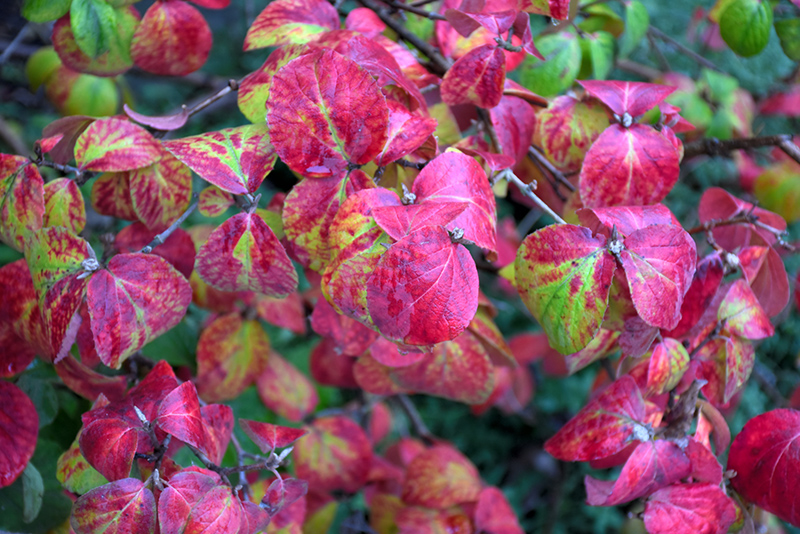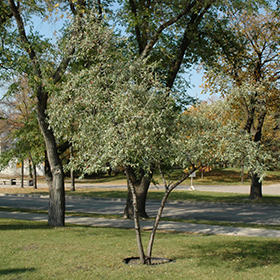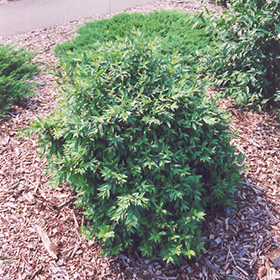Description
Growth & Care
| USDA Plant Hardiness Zone | 5a |
| Growth Rate | Slow |
| Recommended Pruning Method | Prune After Flowering |
Foliage
| Foliage Type | Deciduous |
| Fall Color | Red |
| Plant Form | Upright Spreading |
Flowers
| Flower Period | Spring |
| Flower Color | White |
| Flower Fragrance | High |
Additional Categories
| Additional Category | Viburnum |
| Landscape Application | Accent, Massing, Screening, Garden |
Details
Planting & Growing
Koreanspice Viburnum will grow to be about 6 feet tall at maturity, with a spread of 5 feet. It tends to be a little leggy, with a typical clearance of 1 foot from the ground, and is suitable for planting under power lines. It grows at a slow rate, and under ideal conditions can be expected to live for 40 years or more.
This shrub does best in full sun to partial shade. It prefers to grow in average to moist conditions, and shouldn't be allowed to dry out. It is not particular as to soil type or pH. It is somewhat tolerant of urban pollution. This species is not originally from North America.
Landscape Attributes
Koreanspice Viburnum is a dense multi-stemmed deciduous shrub with an upright spreading habit of growth. Its average texture blends into the landscape, but can be balanced by one or two finer or coarser trees or shrubs for an effective composition.
This is a relatively low maintenance shrub, and should only be pruned after flowering to avoid removing any of the current season's flowers. It is a good choice for attracting birds to your yard, but is not particularly attractive to deer who tend to leave it alone in favor of tastier treats. It has no significant negative characteristics.
Koreanspice Viburnum is recommended for the following landscape applications:
Accent, Mass Planting, Hedges/Screening, General Garden Use
Ornamental Features
Koreanspice Viburnum is smothered in stunning balls of fragrant white flowers at the ends of the branches in mid spring, which emerge from distinctive cherry red flower buds. It has dark green deciduous foliage. The heart-shaped leaves turn an outstanding red in the fall. The black fruits are held in clusters from late summer to late fall.






